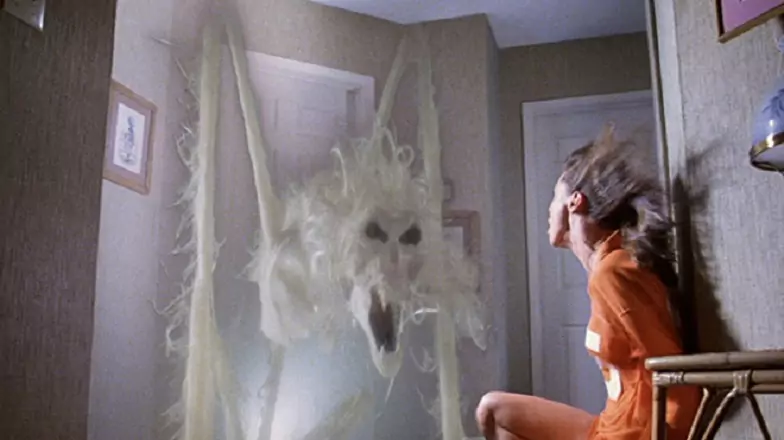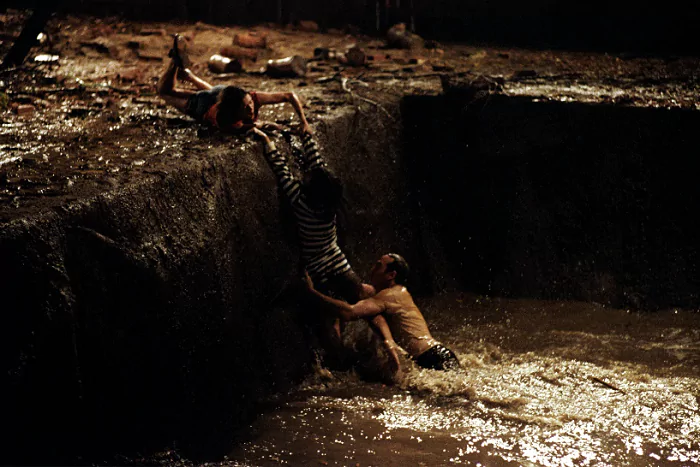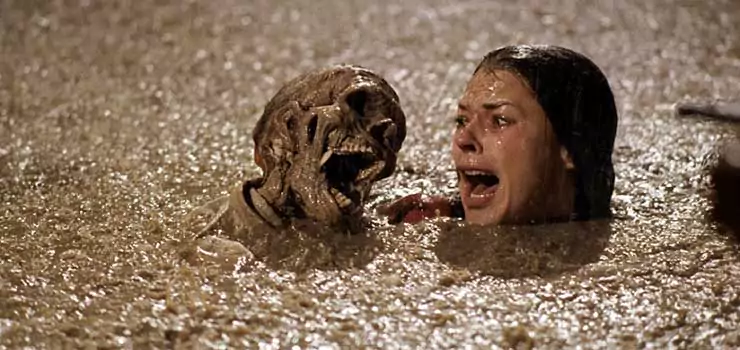Table of Contents
For decades, the 1982 supernatural horror film “Poltergeist” has chilled audiences with its tale of a suburban family haunted by evil spirits in their new home. Beyond the jump scares and iconic special effects, a persistent rumour has swirled around the film’s production: using real human skeletons as props. These unsettling whispers have only added to the film’s eerie mystique, leaving audiences to wonder – is there any truth to the claims?

The Power of Props: How Skeletons Enhance Horror?
Props are crucial in creating a believable and unsettling atmosphere in horror movies. With their stark reminder of mortality, Skeletons are a particularly potent prop choice. Their bony forms evoke a sense of fear and the unknown, reminding us of our vulnerability. From the skeletal hand reaching through the closet door in “Poltergeist” to the towering skeletons in Jason and the Argonauts, these props tap into a primal fear of death and the macabre.
The Haunting Rumors: Where Did They Begin?
The rumours surrounding using real skeletons in “Poltergeist” are shrouded in mystery. Some speculate that on-set accidents or unusual occurrences during filming fueled the speculation. The unsettling realism of the skeletal props, combined with the film’s dark themes, planted the seeds of doubt in some viewers’ minds.
Investigating the Claims: Separating Fact from Fiction
Verifying the use of real skeletons in a film production decades ago can be a challenging task. Special effects techniques in the 1980s were quite advanced, capable of creating remarkably realistic props. Cast and crew interviews offer some insights. Some special effects artists have denied using real skeletons, while others have remained tight-lipped. The ambiguity only adds to the intrigue.
Examining the Special Effects: A Look Behind the Scenes
Delving deeper, we can explore the ingenious special effects techniques employed in “Poltergeist” that likely fueled the rumours about real skeletons. The film’s iconic swimming pool scene, where little Carol Anne sinks beneath the surface surrounded by skeletal hands, stands out as a prime example. Here, filmmakers relied on a combination of techniques:
- Stop-Motion Animation: Animators meticulously moved miniature skeletons frame-by-frame, creating the illusion of movement beneath the water’s surface. This painstaking process yielded a chillingly realistic effect.
- Prosthetics: For close-up shots of skeletal hands reaching from the pool, special effects artists crafted realistic prosthetics made of latex and other materials. These prosthetics were then manipulated by puppeteers or positioned strategically to achieve the desired effect.
- Lighting and Cinematography: Clever lighting and camerawork enhanced the illusion. By manipulating light and shadow, filmmakers could create a sense of depth and realism, further blurring the lines between reality and special effects.
These techniques, combined with the talent of the special effects team, resulted in groundbreaking visuals that continue to impress audiences today. It’s no wonder some viewers, unfamiliar with the intricacies of special effects in the early 1980s, might have mistaken these creations for real bones.

The Ethical Debate: Should Real Skeletons Be Used in Films?
Whether real human remains should be used in film productions sparks a complex ethical debate. Proponents argue that real skeletons can provide an unmatched level of authenticity, particularly for historical films or documentaries. However, opponents raise several concerns:
- Respect for the Deceased: Using human remains raises questions about respect for the deceased and their families.
- Obtaining Skeletons: The ethical sourcing of skeletons can be murky. Were they obtained legally and ethically?
- Alternatives Available: With advancements in special effects technology, filmmakers now have many realistic options for real skeletons.
Ultimately, the filmmakers have to decide whether to use real skeletons. However, considering the ethical concerns and the effectiveness of modern special effects, most productions opt for the latter.
The Legacy of “Poltergeist”: More Than Just Skeletons
The rumours about real skeletons have become an undeniable part of “Poltergeist’s” enduring legacy. The film’s impact on popular culture and the horror genre is unmistakable. It spawned sequels, merchandise, and countless parodies. Beyond the skeletal rumours, the film’s themes of family, loss, and the dangers of unchecked suburban development continue to resonate with audiences. Other controversies surrounding the production, such as the alleged use of child endangerment tactics during filming, have also added to the film’s mystique.
Also read this The Rise of a Star: Exploring the Life of Jai Malik Wiggins Jr.
Conclusion: Fact or Fiction? The Final Verdict
While the rumours about real skeletons in “Poltergeist” persist, the available evidence suggests they are just that – rumours. The ingenuity of the special effects team and the limitations of verifying claims decades later make it difficult to disprove the rumours definitively. However, considering the ethical concerns and the effectiveness of special effects techniques, it’s highly unlikely that real skeletons were used. The true power of “Poltergeist” lies in its masterful storytelling, groundbreaking special effects, and ability to tap into our deepest fears. The film remains a chilling testament to the enduring power of cinema.

Frequently Asked Questions (FAQs)
What evidence supports using real skeletons in “Poltergeist”?
There is no concrete evidence to support the use of real skeletons. Special effects techniques of the era and interviews with some crew members suggest otherwise.
How did the rumours about real skeletons affect the film’s reception?
The rumours undoubtedly added to the film’s mystique and notoriety. For some, it heightened the film’s sense of realism and horror.
Are any other films rumoured to have used real skeletons?
Yes, rumours about real skeletons pop up occasionally regarding other horror films. However, similar to “Poltergeist”, these claims are usually unsubstantiated.
What are the ethical alternatives to using real skeletons in films?
Modern special effects offer many alternatives, including prosthetics, stop-motion animation, CGI (computer-generated imagery), and 3D printing. These techniques can create highly realistic effects without ethical concerns.
Does using real skeletons make a horror film scarier?
The effectiveness of horror relies more on atmosphere, story, and effective use of suspense than the mere presence of real skeletons. Modern special effects can create just as frightening visuals without ethical dilemmas.




